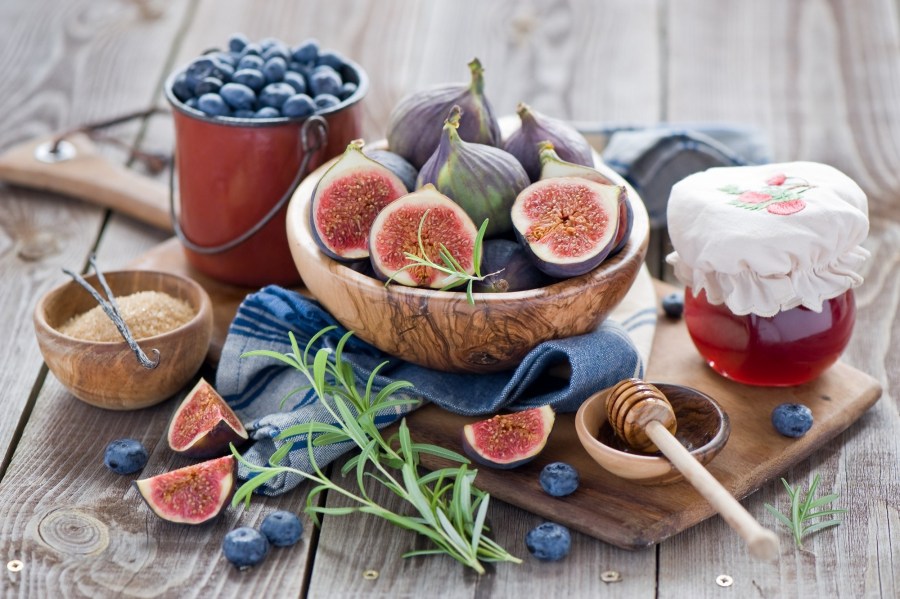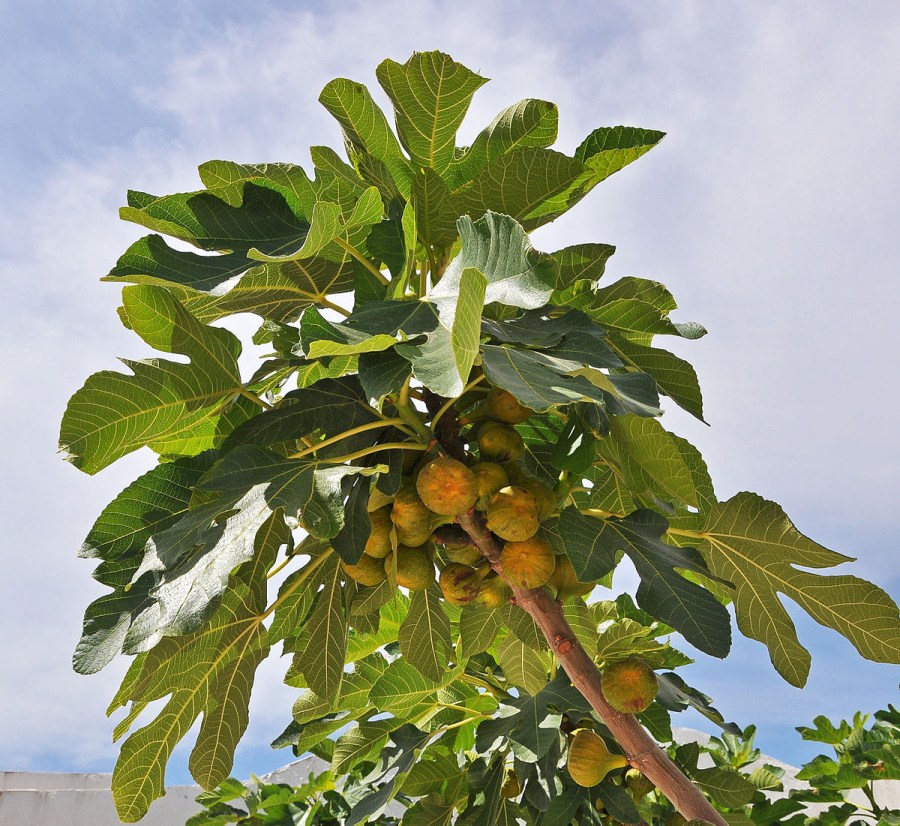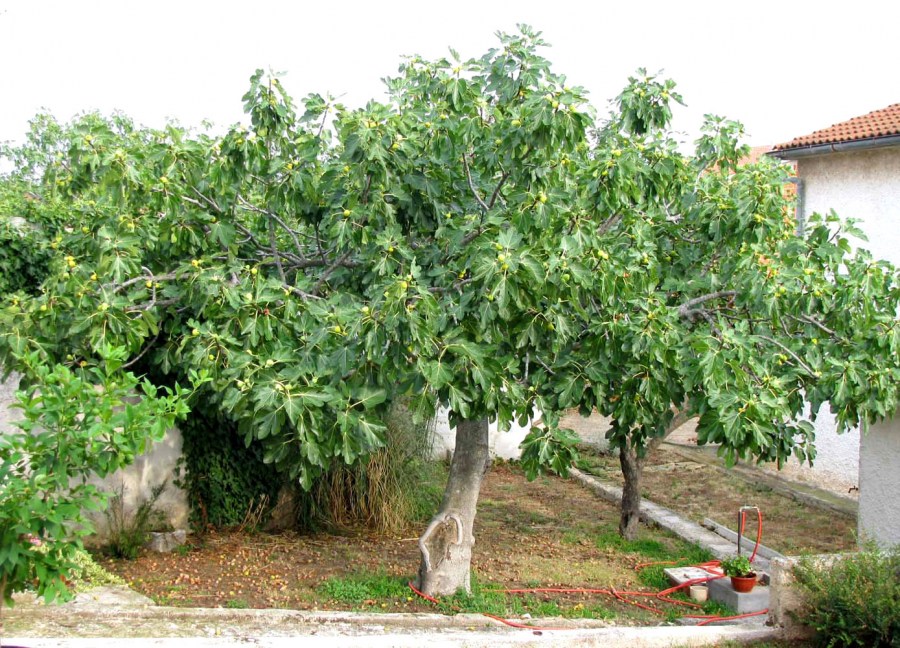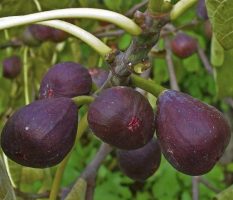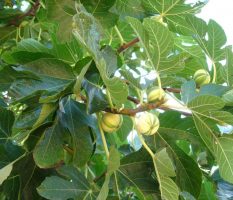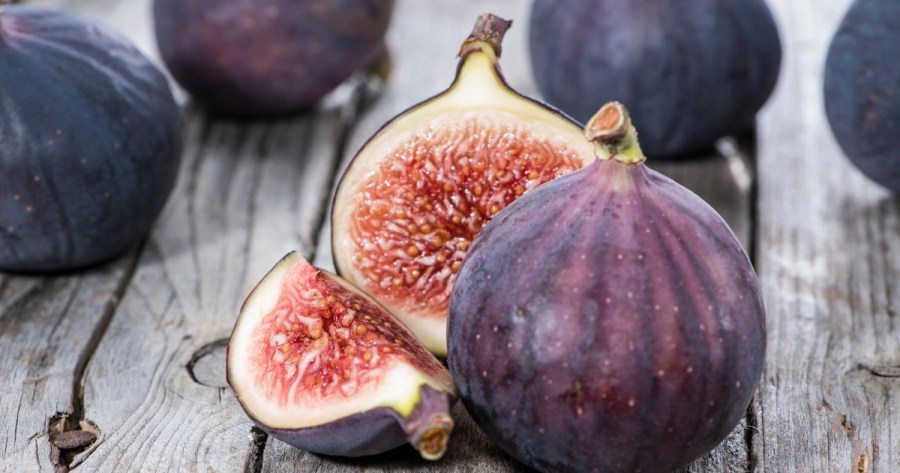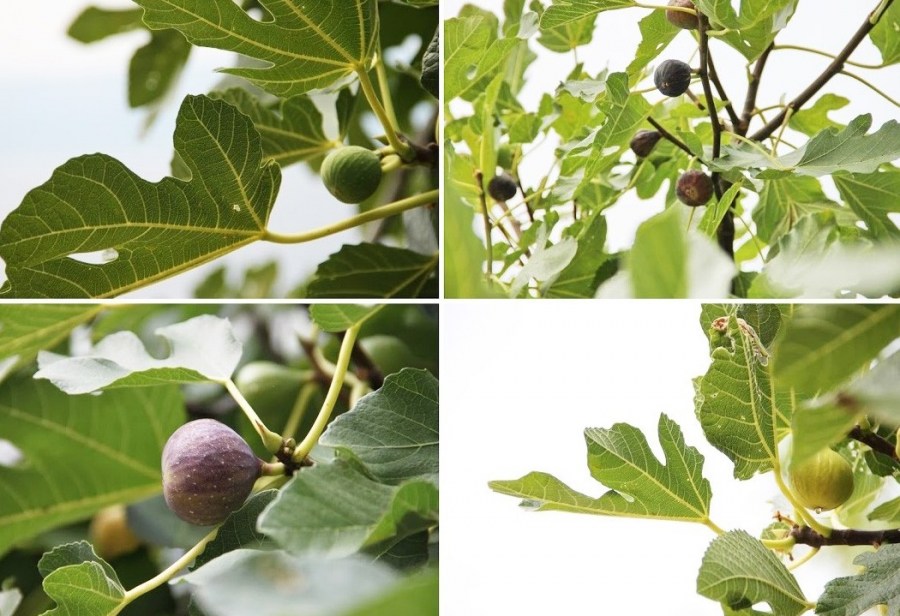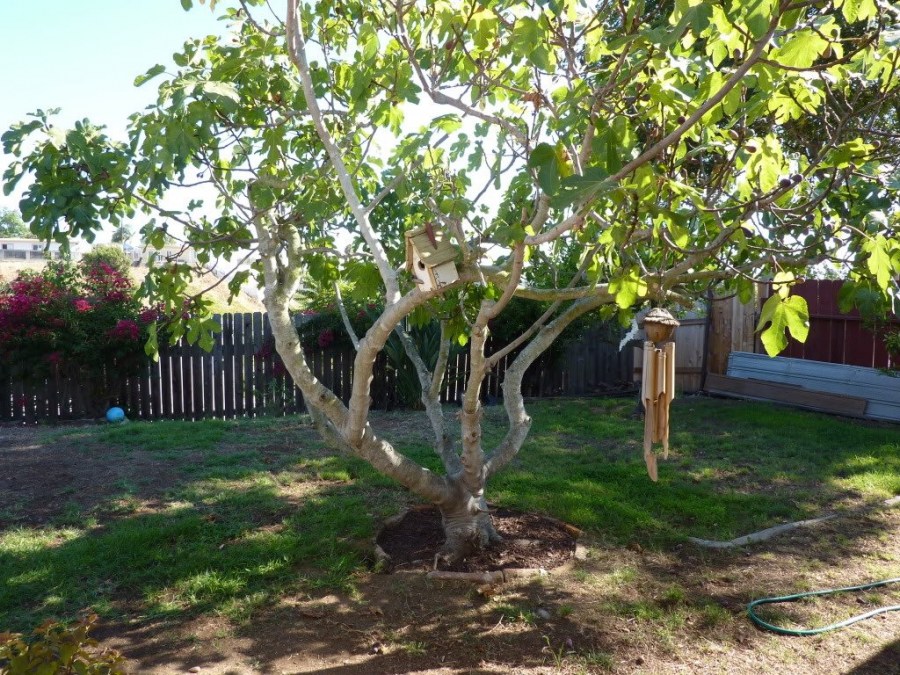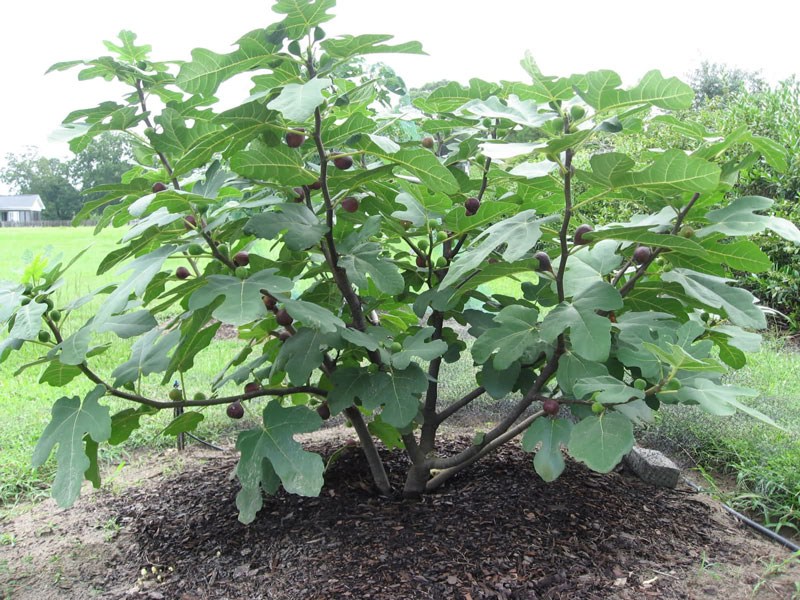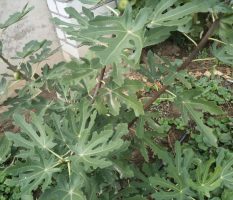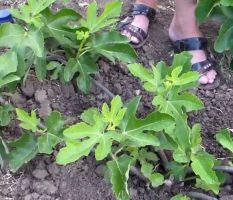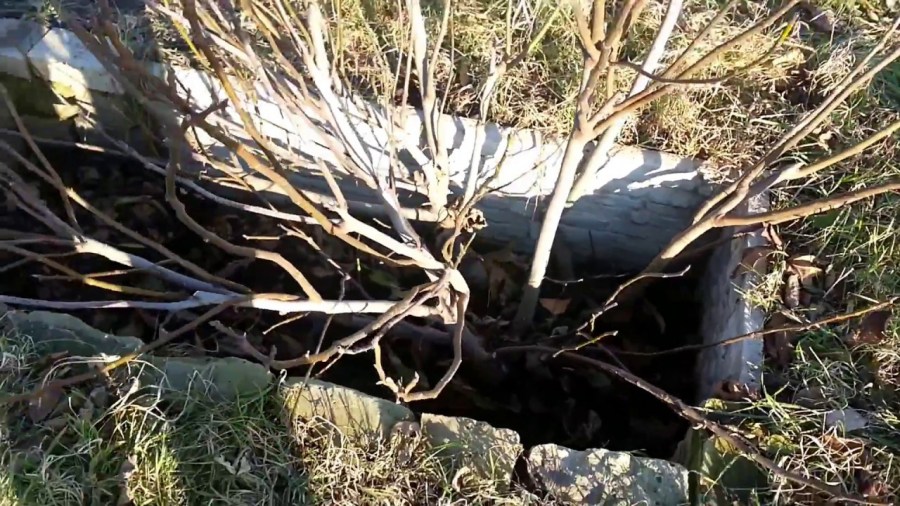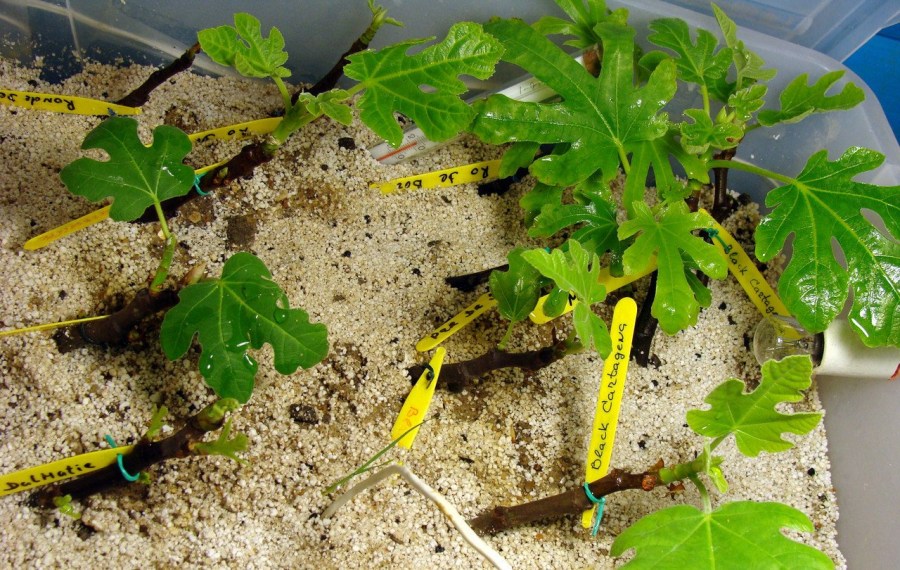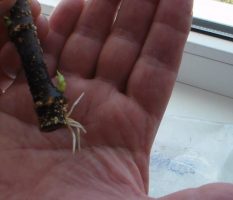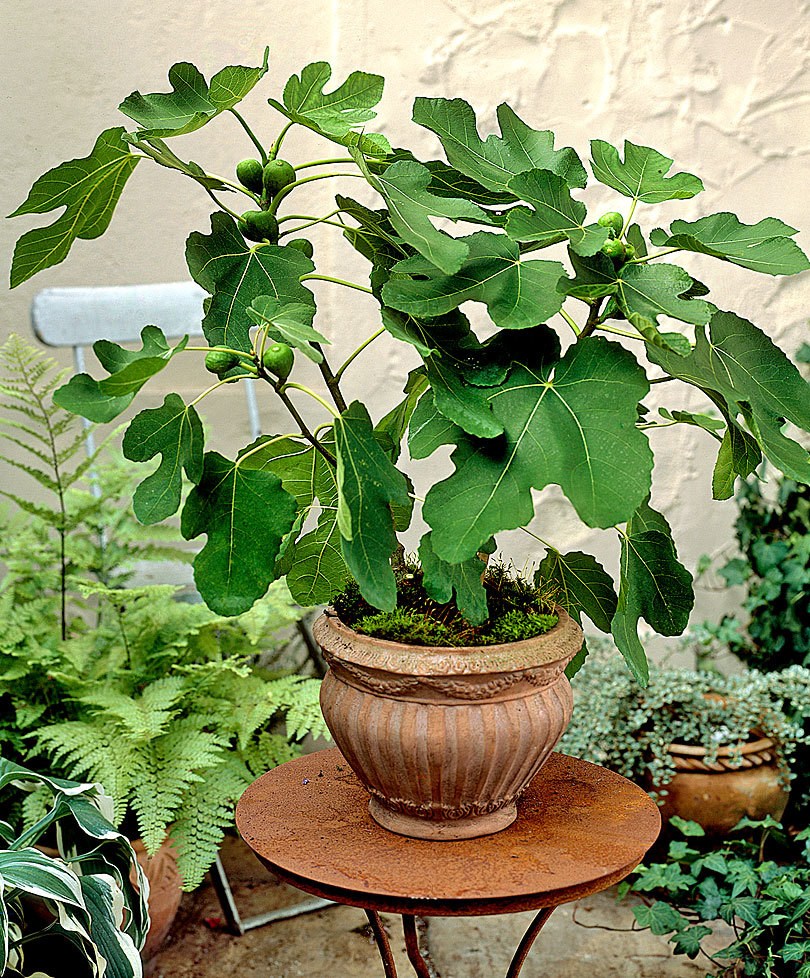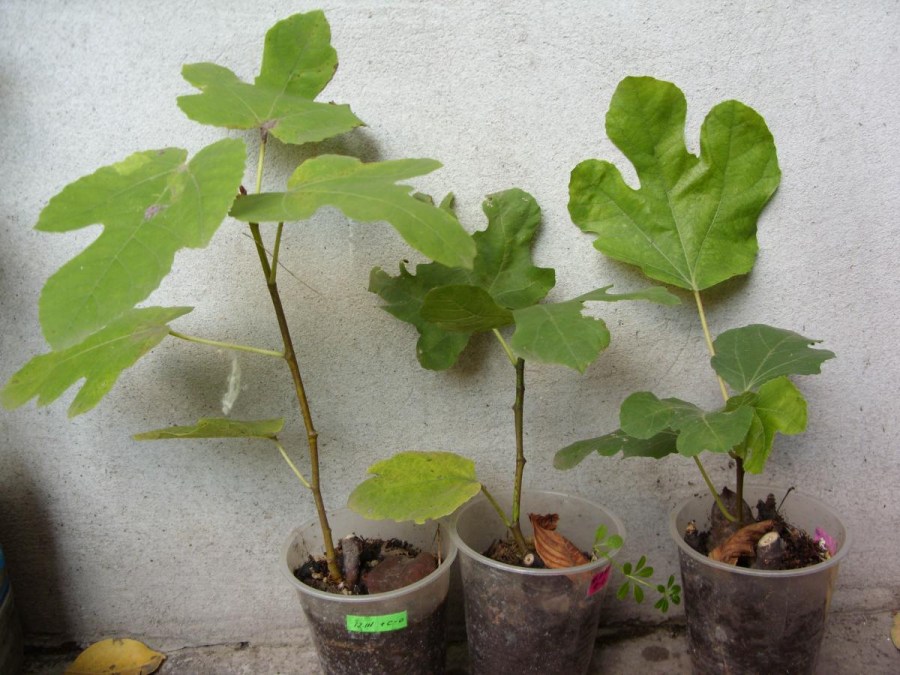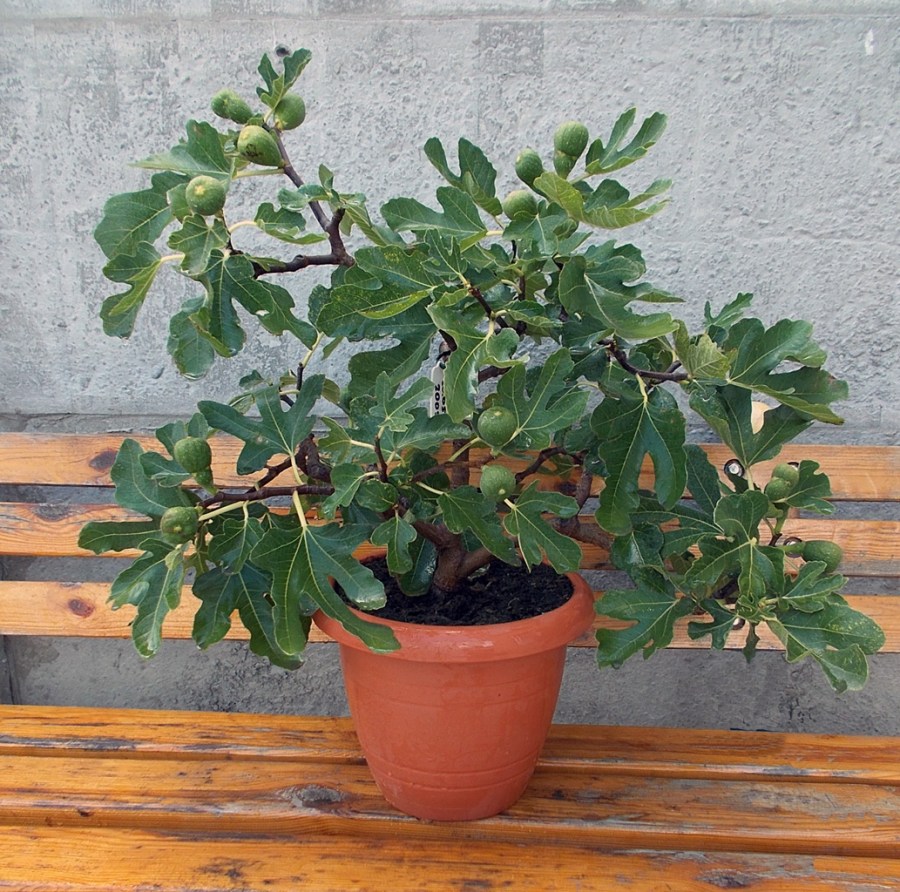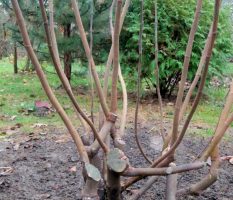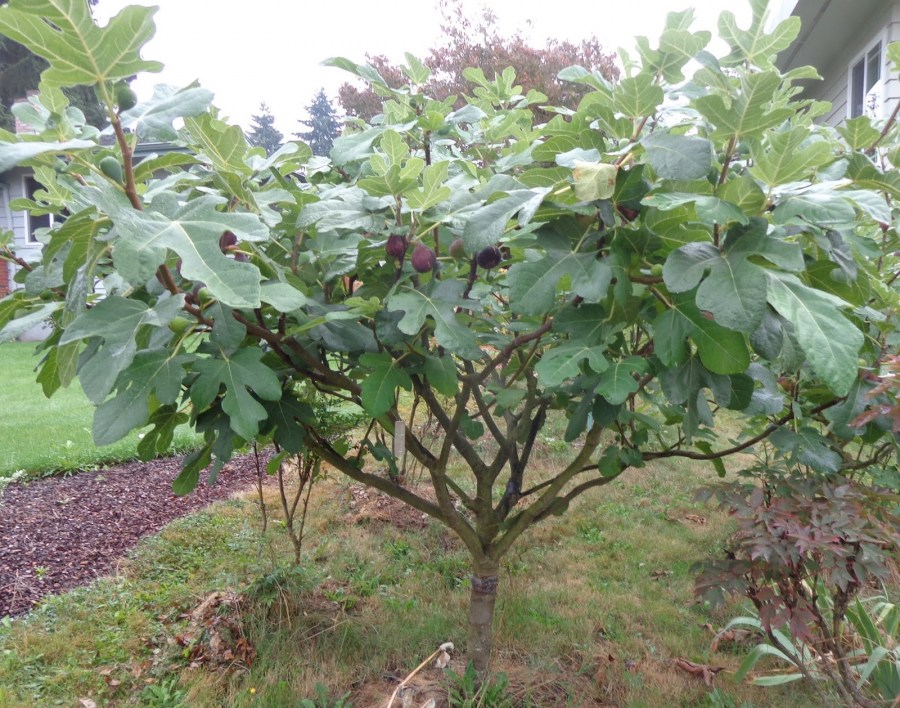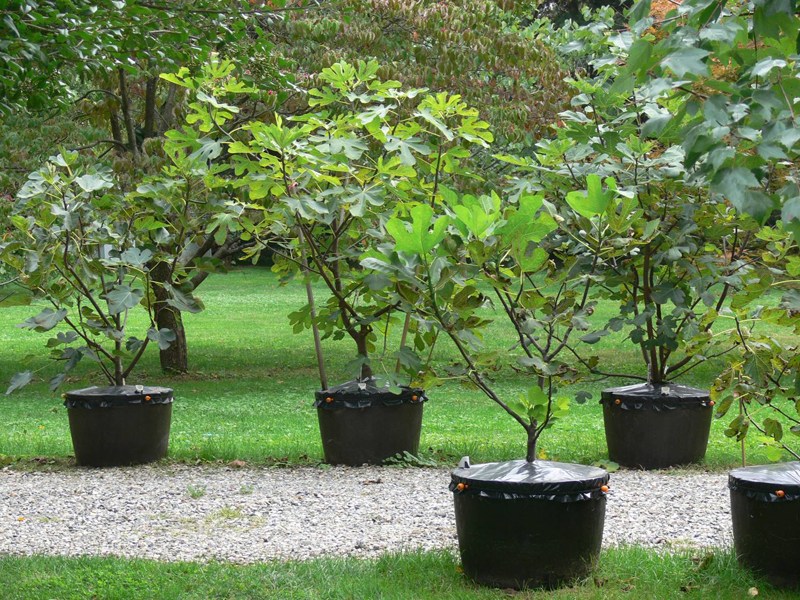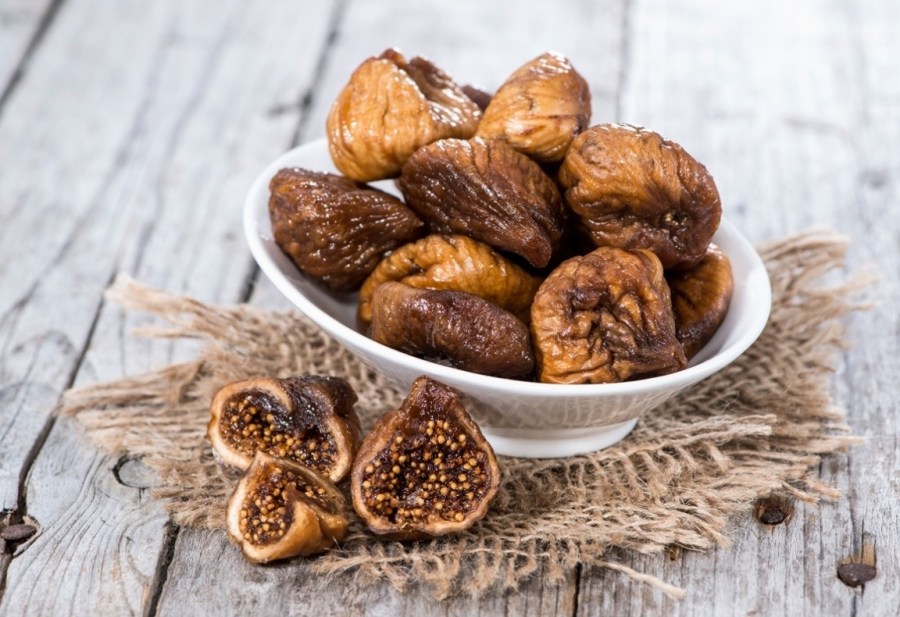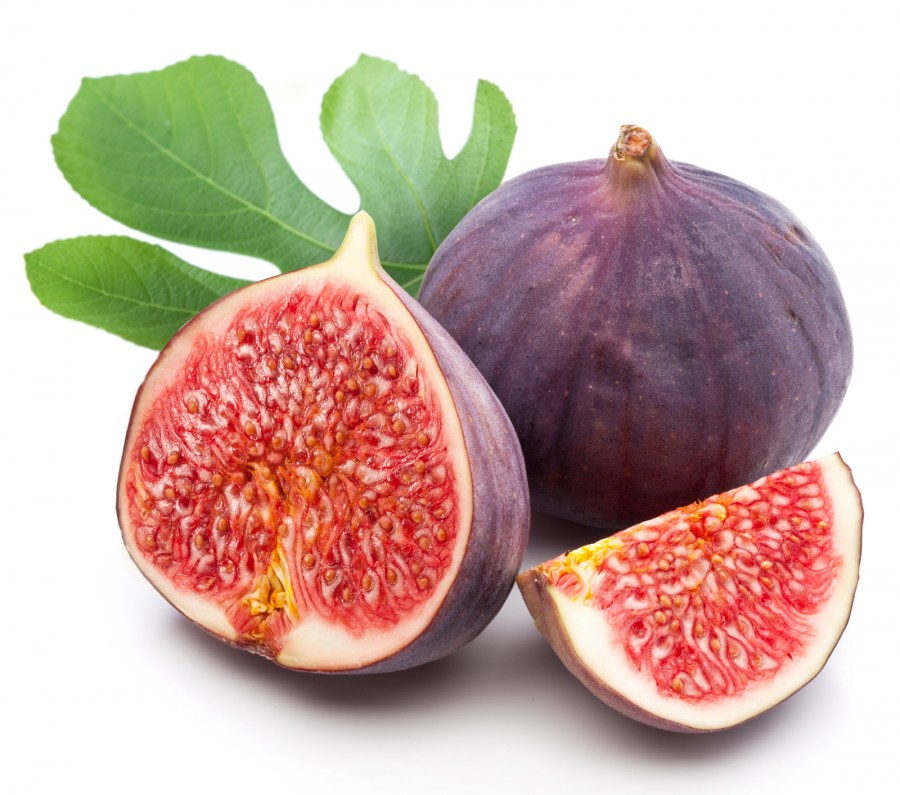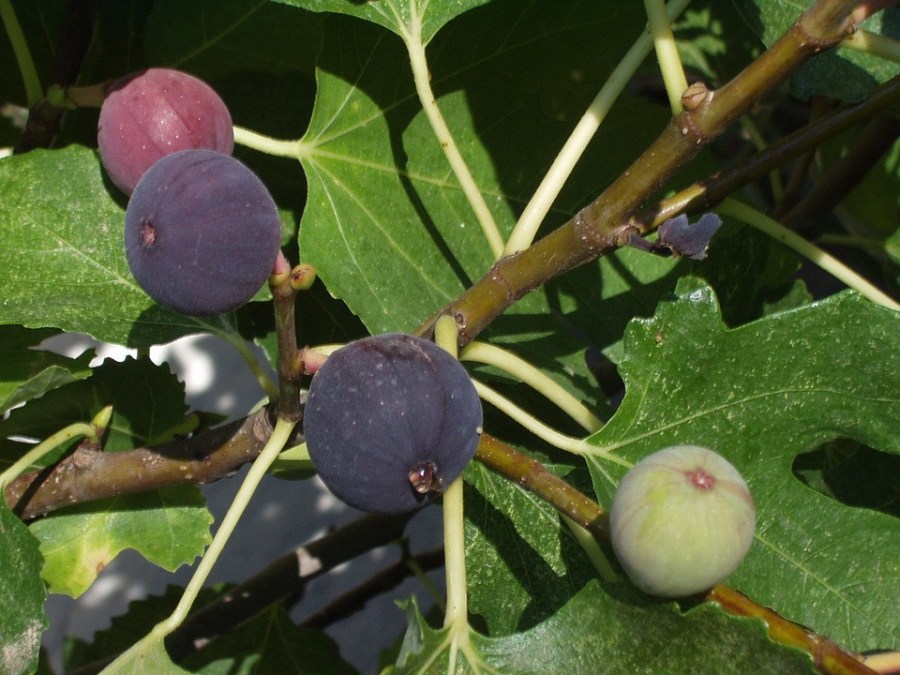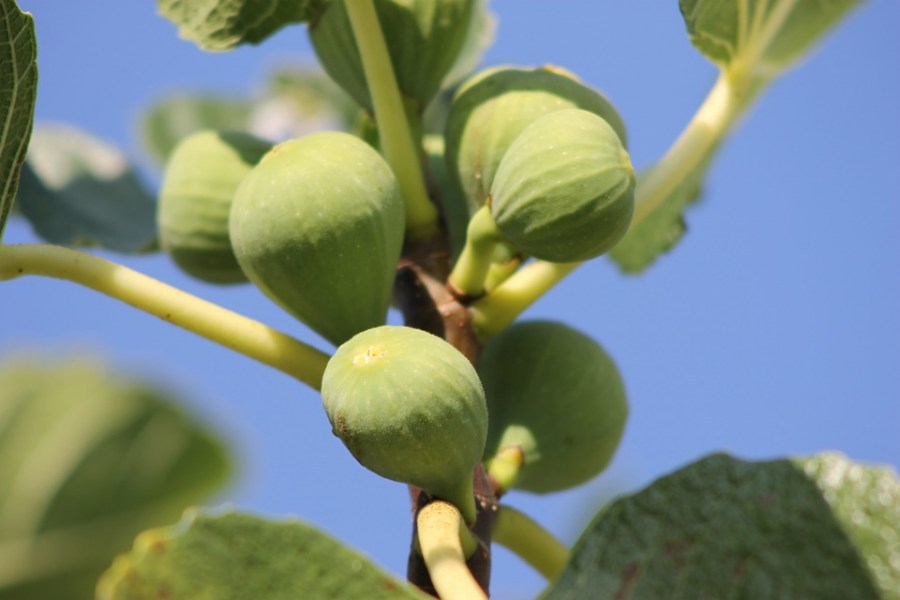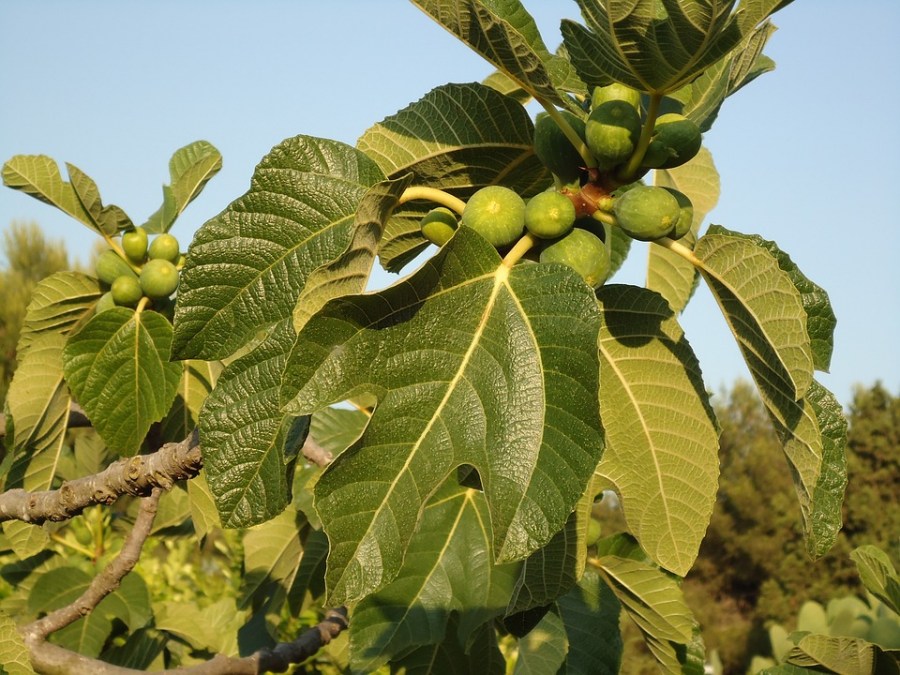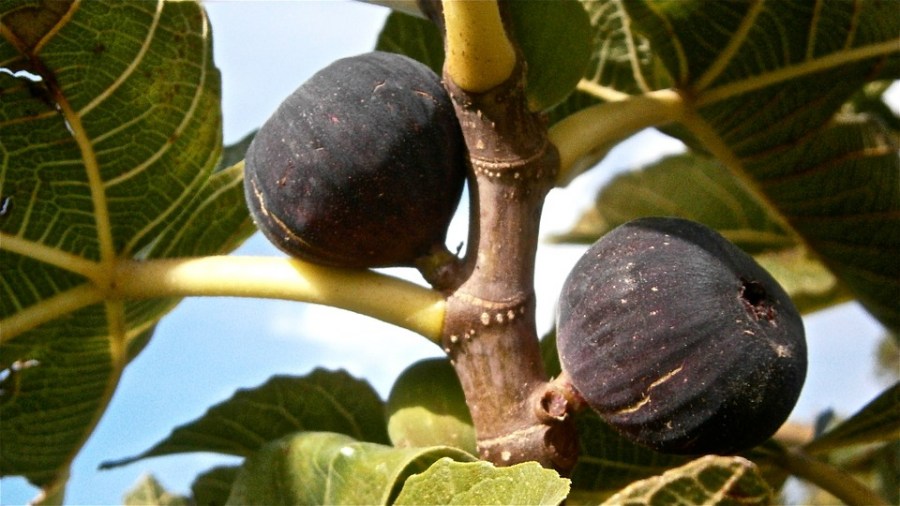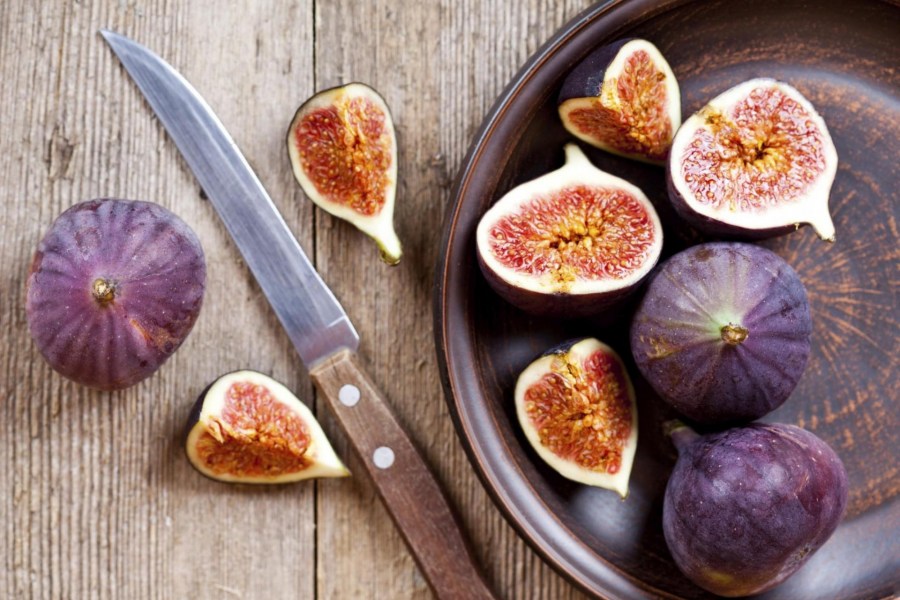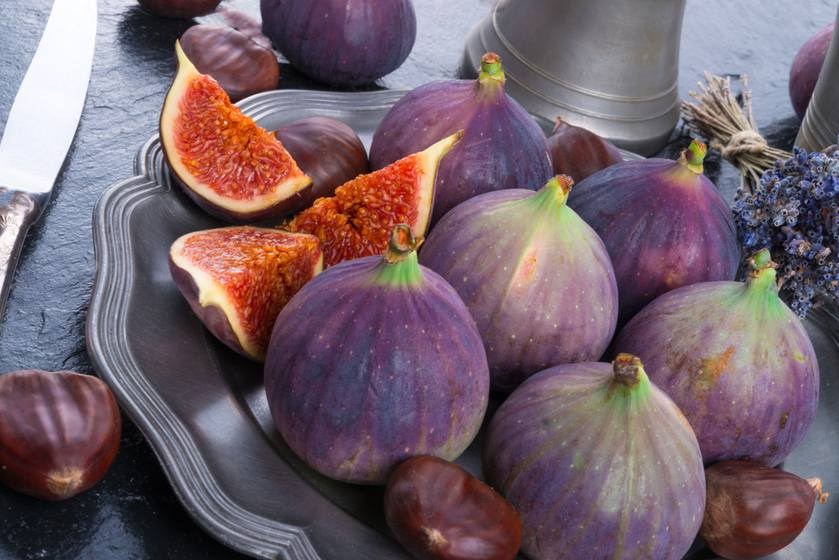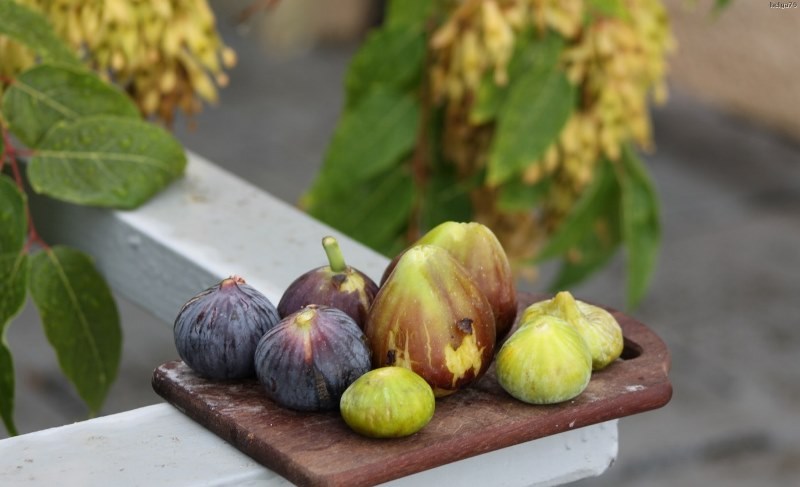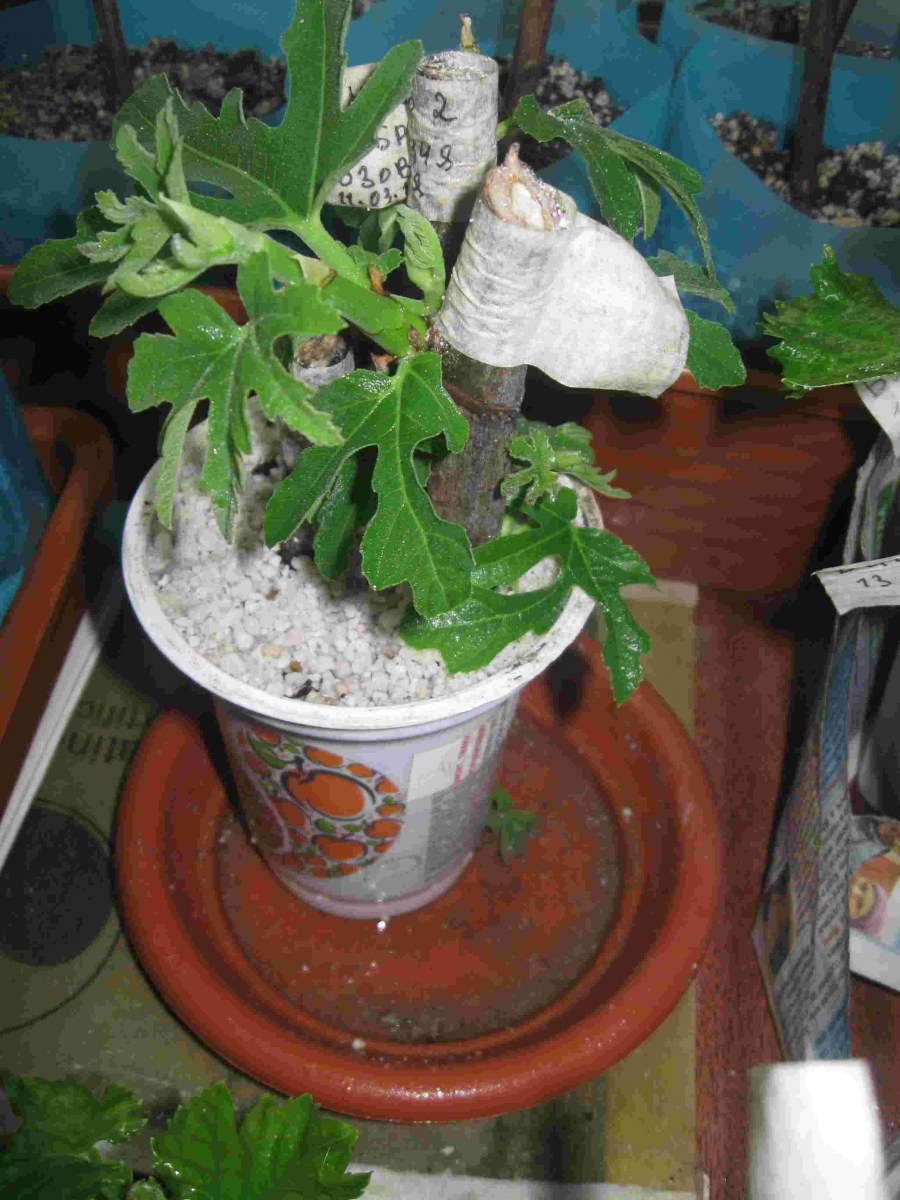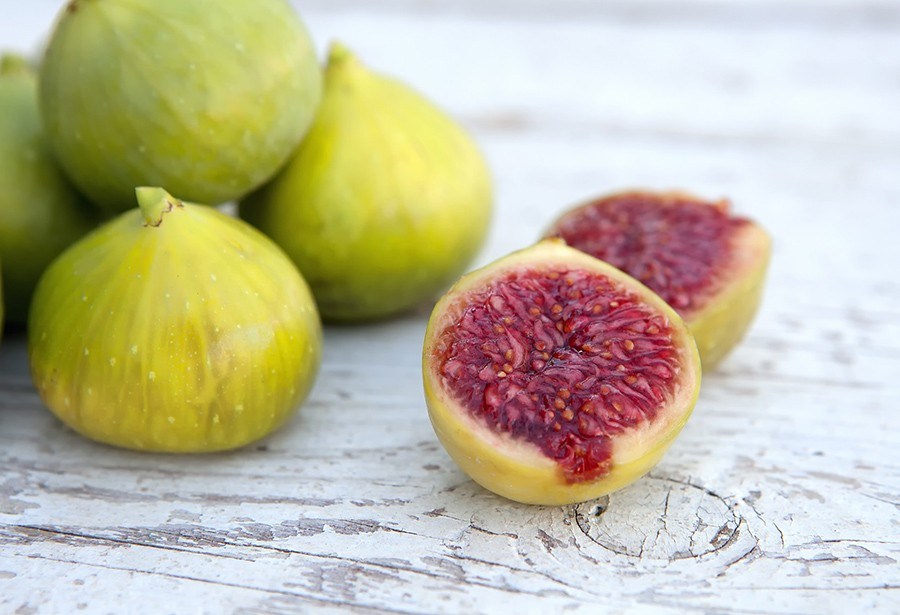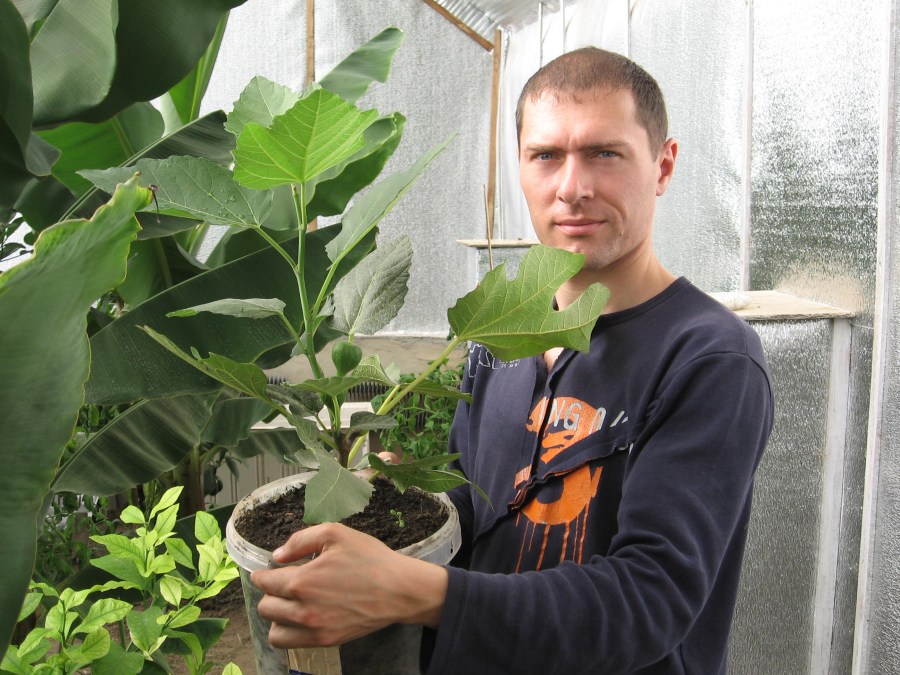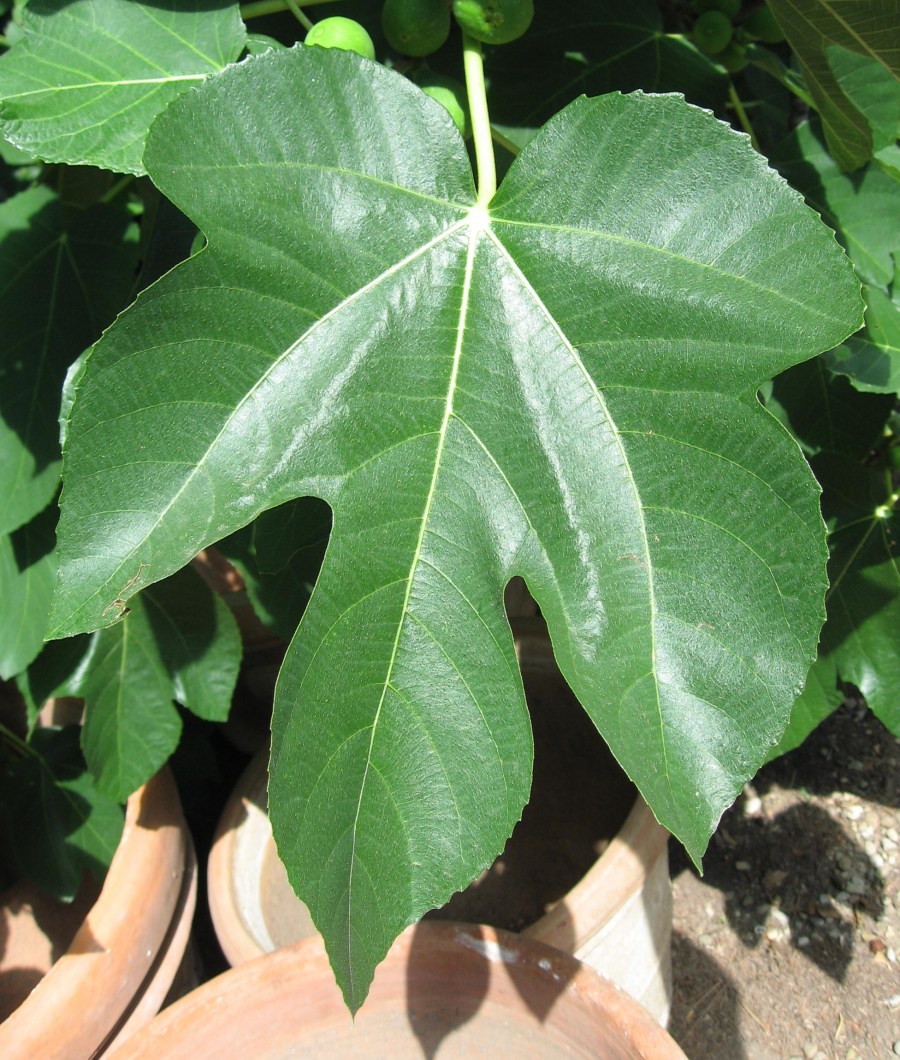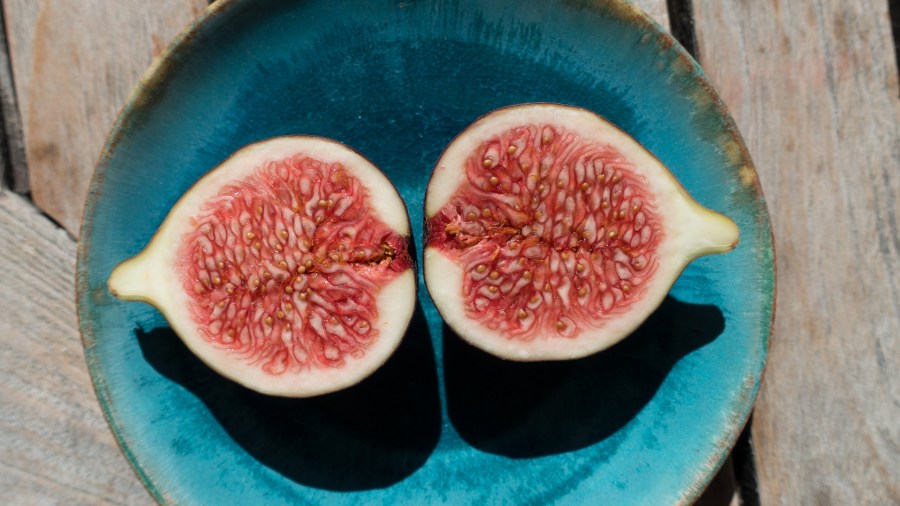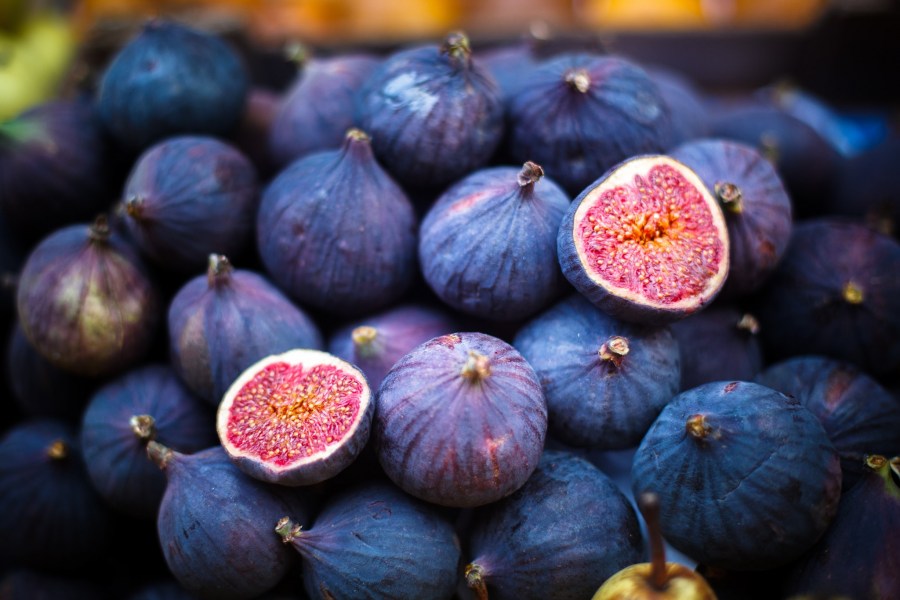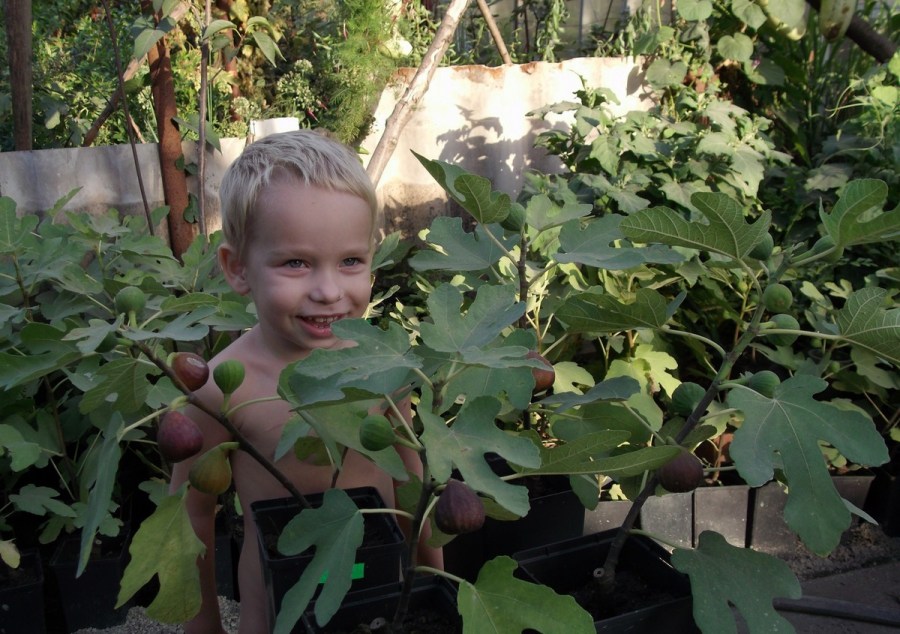Figs are the best beneficial properties of the fruit. Many photos, instructions and recommendations are only here!
Figs are one of the oldest tropical plants and have great potential. Belongs to the genus ficus (Ficus carica, in Latin), which are often used for decorative purposes in apartments and houses. Other names for figs are fig tree (fig), fig tree, wine berry.
To have a complete picture of this tree, it is necessary to dwell in more detail on how it looks, where figs grow, how to grow it at home, and also find out what useful properties it has.
Appearance
The fig tree has thick smooth branches and a very wide crown. The height of the plant reaches 8-10 meters, fig roots, which grow up to 15 meters in width, are no less “branchy". In the photo of figs, the emphasis is always on its fruits. Meanwhile, the leaves of this tree are saturated green, sometimes with a shade of gray, have a complex shape, hard and quite large - up to 15 cm.
The fruits of the fig tree are pear-shaped, covered with thin skin and small hairs. The length can be up to 10 cm, they differ in a juicy and sweet taste, two color options are possible - yellowish-green or dark purple. The variety determines what the color and size of the fruit will be.
When the berries of the figs are not ripe yet, they cannot be eaten, as they contain a certain amount of inedible latex. Depending on the size of the seeds, their number can vary from several tens to a thousand.
Fig tree can bear fruit up to 200 years, but only under favorable climatic conditions. Flowering during the season is possible multiple, the fruits are tied in late summer - early fall.
Places of growth
Due to its unpretentiousness, the fig tree is widely distributed on almost all continents. Figs have long been growing in the territory of present-day Crimea, Transcaucasia and Central Asia. Fig tree begins to bloom 3 years after planting, and actively bear fruit - after another 4 years. For breeding use both seeds and cuttings with layering.
Despite the thermophilic nature of this plant, fig trees can be grown in our strip with a fairly cold climate. And if you approach the cultivation of figs on the right side, you can get a good harvest.
Strictly speaking, in an open area in northern conditions, it is impossible and not necessary to obtain a full-fledged tree; Depending on weather conditions, fig trees are grown in trench, greenhouse, open and indoor ways.
Landing methods
For central Russia with mild climatic conditions, trench and open methods are well suited. With an open landing, it is important to choose the right place: it should be sunny and calm. It is best to plant a tree near the south wall, or in a well-lit wall niche.
It is undesirable to plant figs in lowlands and places of accumulation of groundwater. The roots of a fig tree must be limited, for this purpose reinforced concrete slabs are dug in a selected area (approximately 0.5-1 m wide) around the perimeter.
Broken bricks fall asleep at the bottom of the square fence. The depth of the pit is approximately 0.7-1 m. The filler for this pit is prepared from garden soil, rubble stone and bone meal in a ratio of 2: 1: 1.
The trench method has its own characteristics. A suitable place is chosen on the site: from the south it should be open to the sun, and on the other three sides protected from the wind by other garden crops.The trench, about a meter wide, is oriented from east to west, which allows the plant to get maximum solar energy during daylight hours.
The depth of the pit is 1.5 m. On the north side, a protective wall forms from the lower layers of the dug up soil, which is additionally strengthened with slate or any other slab. A smooth bevel is made on the south side. Then a fertile soil layer (about 0.3 m) is poured into the trench. Shrubs of figs are planted with an interval of 2 m. The southern wall is covered with a film that prevents the appearance of weeds on it.
The option of growing a fig tree in a greenhouse is suitable for regions with a sharply continental climate. The greenhouse should be well lit, and also have a lot of free space, because a branching tree will require a plot of about 2 m in diameter.
The roots, as when planting outdoors, need to be limited. Particular attention should be paid to the temperature regime. In the spring, the air temperature is maintained in the range from 12 to 20 degrees, and since the fall - about 4 degrees.
Breeding and care on the site
The most common method of breeding figs is cuttings. Green cuttings are planted in a sand-humus mixture at the beginning of summer and using improvised means (for example, a jar of a suitable size) create a small greenhouse to maintain a high level of humidity. When the seedling is rooted, you can remove the jar.
Another way is seed propagation. Sowing is carried out in a similar soil mixture to a depth of about 3 mm, with an interval of 2 cm. The earth should remain moist and warm, so the area is covered with plastic wrap and wait for seedlings, periodically moistening the soil. Seeds germinate on day 20.
Your climatic possibilities will also tell you which variety is best to choose. Of course, it will be advisable to take something from self-pollinated and frost-resistant: Kadota, or Brunswick. By taste, Crimean Black, Early Gray, and Dalmatian have proven themselves well.
Like all plants, a fig tree needs timely watering. During rooting, watering is carried out 2 times a week, then reduced to 1 time or less. The soil should be moist, but it is not worth it to waterlog, watering at the rate of 1-2 buckets per plant will be sufficient.
Pruning figs is done when they want to form a crown or bush, as well as for sanitary purposes. The stamping of the crown is carried out due to the gradual (during the season) pruning of shoots. A strong shoot is chosen, which will be a mushroom, 3-4 branches of the future crown are left on it.
Over the next 4 years, the ends of the shoots are pruned, which allows the formation of more lateral branches. Next, you can adjust the shape by pinching. The most convenient tree height is 60-70 cm. This form is well suited for greenhouses.
Fan formation is relevant for open and trench landing methods. In order to make such a crown, you need to buy two-year-old seedlings with two side conductors and plant them in early spring. The conductors are cut to the kidney, you need to leave somewhere around 35 cm, and are fixed with a trellis wire at an angle of 40 degrees.
In summer, shoots from the upper kidneys are also fixed, and in the middle part they leave two upper and one lower. For the next winter, 8 lateral growths are cut off from the plant (we leave 60-70 cm).
Removing old branches, root shoots, can be done in spring, summer and after harvest. In spring, figs can be fed with mineral fertilizers using surface loosening.
Before you shelter the figs for the winter, you need to let it bear fruit and wait about 2 more weeks. Then gradually bend the flexible branches to the ground, fixing them with wire or rope with pegs. The main thing in this process is not to rush and do everything carefully so as not to damage the branches.
You can pre-water the figs to make the branches more flexible and easier to bend. The process can take several weeks. Next, wrap the branches with burlap, polypropylene fabric, or any other breathable material. From above everything is sprinkled with earth and a load is placed that does not allow the bush to straighten. Additionally, the earth around the plant can be sprinkled with hay or sawdust.
Features of home cultivation
At home, a tree is planted in a strong pot with a sand-compost mixture of garden soil. It is worth choosing from undersized varieties. In warm weather, the pot with the plant is taken out to the balcony or the street. When the trunk reaches 60 cm, pinch it.
The soil and the pot are changed every year, the tree develops quite quickly and for comfortable fruiting it needs a place. The earth in the pot is regularly loosened to provide oxygen to the roots.
In a city apartment, figs can please you with fruits 2-3 times a year. During the ripening of fig trees, the tree needs a little more heat and light. During dormancy, it is worth placing the plant in a cool place and limiting watering.
Variants of the use of figs and useful properties
Fig fruits are consumed fresh and dried. Fresh fruit is sweet like molasses and juicy like a peach. It can be eaten in combination with ice cream, cream, bread, nuts, or it can be done alone. Great for making jam and stewed fruit. However, it should not be stored for a long time, the maximum period is 3 days in a cool place.
Dried fruit has a more astringent taste. Dried figs in the fall - a storehouse of vitamins. It can be added to a pie or fruit salad, and if you cook dried fruit in milk, you will get a good remedy for seasonal colds.
Photo of figs
Polycarbonate greenhouse - 120 photos of purchased and homemade options
Frame house - 2019 projects + photos of finished houses for year-round use
Plot on the slope: 100 photos of the main structures and measures for strengthening
Join the discussion:
